An Educator’s Introduction to Culturally Responsive Teaching

Written by Eleanor Hecks
Eleanor Hecks is a writer who is passionate about helping businesses create inclusive and diverse spaces. She serves as the Editor in Chief of Designerly Magazine.
Today’s classrooms are more diverse than ever before. Students come from various backgrounds, whether cultural, linguistic or socioeconomic. They bring unique perspectives and experiences.
As the educator, your responsibility now extends beyond delivering the curriculum – it also involves fostering an inclusive environment where all your students feel valued, heard and empowered to achieve their true potential. Culturally responsive teaching is an essential solution.
What Is Culturally Responsive Teaching?
CTR is a research-based pedagogical approach that connects students’ cultural backgrounds with their learning. It focuses on recognizing the assets students can bring into the classroom instead of focusing on perceived shortcomings. CRT helps students engage in deeper learning and develop higher-level academic skills by making these connections.
Theories such as Lev Vygotsky’s Zone of Proximal Development and Jerome Bruner’s Scaffolding underpin CRT’s emphasis on building upon students’ knowledge. These approaches support the importance of connecting new learning to an existing schema, which is central to CRT.
Unlike teacher-centered traditional models, CRT emphasises the student. It integrates diverse cultural aspects into the instruction, tailoring the education process to the student’s needs. Since learning is meaningful and engaging, it promotes a sense of belonging, even among students belonging to minority or marginalized groups.
Why Is Culturally Responsive Teaching Necessary?
Implementing CRT is becoming increasingly necessary in today’s educational landscape. The traditional one-size-fits-all approach no longer addresses the realities of today’s classrooms. Here’s why CRT is growing in demand.
Addresses Diversity in Classrooms
Student ethnicity is growing. A 2022 summary released by the Department of Education showed that the student population comprises 6.5% Asian pupils, 6% mixed or black pupils and 2% belonging to other ethnic groups. These statistics reflect the growing diversity of classrooms in the UK. Standardised teaching methods fail to cater to this diversity, which leaves minority students disengaged and underrepresented.
Strengthens Student Engagement
Students are more likely to connect with and retain information when they see their identities reflected in the curriculum. CRT helps make learning more relevant to their lived experiences.
Promotes Equity and Inclusion
CRT seeks to reduce disparities in education by creating equitable learning environments that recognise and celebrate every student’s identity. Inclusive strategies benefit minority students and open opportunities for the majority to learn as the two groups participate in intercultural conversations and learn about each other’s cultures.
Prepares Students for a Globalised World
There is a direct, positive correlation between cultural and emotional intelligence. CRT equips students with the skills to understand and respect other people’s viewpoints.
Students who grasp that there are different cultures and beliefs grow into adults whose emotional intelligence (EI) makes them compassionate, open-minded and culturally sensitive. This emotional intelligence is responsible for between 27% and 45% of job success as a whole, emphasizing the importance of supporting students’ EI before they enter the workforce.
Develops Critical Thinking
Incorporating multicultural perspectives in classrooms challenges students to think critically about social issues, providing them additional context to understand the wide world around them.
How to Apply Culturally Responsive Teaching in Your Classroom
Adopting culturally responsive teaching doesn’t require completely overhauling your current working methods. Small, intentional changes can create significant impacts. Here are practical steps to integrate CRT into your teaching practices.
- Activate students’ knowledge by connecting with their cultural or personal experiences.
- Tie your lessons to real-world events or contemporary issues so students see their value beyond the classroom.
- Ensure your curriculum and resources reflect diverse authors and cultures.
- Consider your classroom’s physical and visual setup to be more inclusive of minority groups.
- Build strong student-teacher relationships and learn more about your students’ interests, cultural backgrounds and identities.
- Create opportunities for group projects and assignments.
- Attend workshops, read research and collaborate with colleagues to refine your pedagogic practices.
The Impact of Culturally Responsive Teaching
Culturally responsive teaching can transform both students and teachers. For your pupils, it strengthens their sense of identity, boosts academic achievement and allows for deeper engagement with their learning experience. For educators, it provides an opportunity to make a meaningful impact in their students’ lives as they contribute to a more equitable education system. Embracing CRT enables students to prepare for the multicultural world beyond their classrooms.
Empowerment, Inclusion, and Storytelling: A New Approach to History Education
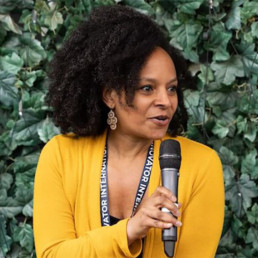
Written by Dana Saxon
Dana Saxon is an educator, writer, and family historian who seeks to address global inequities in education. Her organisation, Ancestors unKnown, changes the way pupils learn about history, themselves, and the world around them, providing opportunities for them to learn about marginalised histories and stories from their own communities.
Traditional history education can sometimes feel stale and uninspired – a series of dates and old white men who seem to have little or no relevance to the lives of today’s children. This approach, heavily focused on Eurocentric perspectives and the accomplishments of a select few, can leave many students feeling excluded and disconnected from the past.
But, as even Ofsted explained in their 2023 report about history education, “Every pupil is entitled to encounters with the richness of the past and the complexity of historical enquiry”.
A New Approach: Student Stories at the Centre
What if we reframed history education? What if we centred the learning experience around the unique stories of each child?
This is the vision driving Ancestors unKnown, a unique approach to history education that empowers young people by weaving their personal narratives into the larger context of local and global history.
At the heart of our methodology lies the belief that every child’s story is a valuable piece of the historical puzzle. We encourage students to explore their own family and community histories through oral histories and archival research. By interviewing elders, collecting family artefacts, and delving into local archives, children uncover the unique stories of their ancestors and the elders in their community, including their struggles, their triumphs, and their contributions to society.
Then, while our students are empowered to personalise historical research, we help them connect these personal narratives with the untold and often marginalised histories that have shaped our world. As a result, students learn about the contributions of diverse communities, stories about migration, struggles for social justice, and other hidden stories that lie beneath the surface of conventional historical narratives.
The Benefits of Ancestors unKnown
Our integrated approach fosters a profound sense of belonging and empowerment. When children see how their own stories connect to the larger historical narrative, they develop a deeper understanding of their place in the world. They begin to see themselves as active participants in history, not just passive observers.
Furthermore, by sharing their family histories with their classmates, children gain valuable insights into the diverse experiences and perspectives of those around them. This fosters empathy, understanding, and a greater appreciation for the people and communities around them.
With our approach, Ancestors unKnown is making history curriculum more inclusive and equitable. By centring the experiences of diverse communities and highlighting the contributions of marginalised groups, we challenge traditional narratives and create a more representative understanding of the past.
“Our community interviews were really successful!” shared a primary school teacher about their Year 5 Ancestors unKnown project.” We interviewed adults from South America, England, France, China and Nigeria! The children asked some really interesting questions and really enjoyed listening to the different family and community stories.”
Bringing Ancestors unKnown to More Classrooms
Ancestors unKnown provides schools with a toolkit and ongoing support to implement our programme during one school term for Y5 or Y6. We also offer teacher training, parent/community engagement workshops, and access to a network of local historians and storytellers as guest lecturers.
We believe that by empowering teachers, students, and their families with the tools and knowledge to uncover their own historical narratives, we can create a more inclusive and engaging learning experience for everyone.
Ready to transform history education in your school? Learn more about our programme and contact us to bring Ancestors unKnown into your classrooms.
Let’s work together to empower the next generation of historians to tell a different, more inclusive story about the past – a story that includes their ancestors.
From Representation to Transformation: The Impact of Diverse Governing Boards in Schools
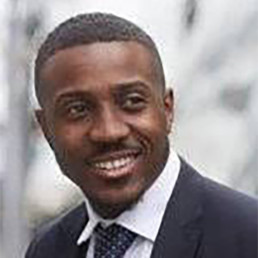
Written by Krystian McInnis
Krystian McInnis is a Religious Education consultant, advisor, and researcher specialising in decolonising and diversifying Religious Education. With a career that spans the public, private, and charity sectors, he brings extensive national and international experience in curriculum diversification and decolonisation. As the Co-Founder of Reimagining Education, Krystian is dedicated to creating a more inclusive and equitable educational system where everyone feels seen, heard, and that they belong.
School governing boards in the UK are entrusted with the critical task of shaping the educational experiences of both students and staff. Within their role, they have the power to influence curriculum choices, define and redefine budget allocations and set the future direction of the school or trust, all whilst ensuring robust safeguarding policies are in place. Therefore, for these decisions to be equitable, inclusive, and representative of society, there must be a concerted e=ort to foster diversity within governing bodies that are then truly representative.
In a country as richly multi-cultural as the UK, ensuring that school governing boards reflect the communities they serve is notably more important now than ever before. Unfortunately however, as the UK’s demographics shifts, the diversity in school leadership remains stagnant. I believe that it is fundamental that we ensure governing boards mirror the demographics of their school communities. In doing so, this allows for them to be better equipped in making informed, equitable, and culturally competent decisions that benefit not only their students and staff, but the local community too. Sadly however, we see too often, where governing boards fail to reflect the diversity of their student bodies, they risk the potential for policies and practices to be occasionally overlooked and the inadequate addressing of key issues surrounding cultural sensitivity, religious practices and diverse student engagement and motivation.
Why Diversity on Governing Boards Matters
It’s important to note that the significance of diverse governing boards goes beyond fair representation and rather works towards a system where we can directly challenge biases and dismantle systemic inequities within education. When boards include individuals from varied cultural, racial and socioeconomic backgrounds, they bring with them a wealth of knowledge which not only benefit individual schools but also strengthens that of the local community too. Fundamentally, leadership diversity can seek to challenges traditional ideas of governance and in doing so encourage schools to adopt more inclusive and adaptable leadership styles. With diverse leadership teams often outperforming homogenous ones in terms of innovation, empathy and policy relevance, the time has come for us to move beyond the idea that leadership is monolithic and embrace the variety of voices available (George 2022).
Moreover, with diverse boards also more likely to foster a greater sense of cultural competency, having board members and trustees from different cultural backgrounds is beneficial and often results in a better understanding to address the unique needs of students from diverse backgrounds too. Carter (2021) found that within governing bodies, cultural awareness did not just enrich a board’s discussions, it in fact had tangible impacts on policy priorities, curriculum content, and school culture.
Although research is still in its infancy, emerging findings shows that there is also a link between diverse governing boards and student success. Begum (2020) asserts that a governing board that mirrors its student body helps to creates an environment where every child feels they belong, ultimately resulting in an increase to their motivation and engagement to learning. This level of representation becomes of even more importance at the governance level, not just for students, but for sta= and the local community too. With one of the roles of school governance to have a positive impact for both the school and local community too, strengthening relationships between schools and the wider community, where parents and community members see themselves reflected on the governing board, helps to build trust and foster greater engagement with the school.
Reimagining School Leadership: Moving Beyond Outdated Governance Models
Diversity within school governing boards also has broader implications for the diversity of sta= within the school. A diverse governing body helps to set the tone for inclusive hiring practices, which in turn ensures a more diverse teaching and support sta= workforce. For decades, UK school governance has been based on an antiquated, old fashioned model of leadership, concentrated in the hands of a small group of individuals, often lacking in diversity. The time has come however, for this to be truly reimagined. Leadership teams need to be able to address the challenges faced by their modern, multicultural student and sta= populations, not just from a theoretical standpoint but through having similar lived experiences too. Therefore, reimagining what leadership looks like means moving away from the ‘we have always done it this way’ approach, to creating space for innovative and culturally competent governance. It is vital therefore, for diverse governing bodies to support in this work, to take up the mantle and challenge the traditional hierarchies of leadership that have often overlooked the contributions of minority groups. By creating space for a broader range of voices, schools will undoubtedly develop a more flexible and inclusive leadership structure.
Building a Diverse Governing Board: Recruitment and Support
Whilst the recruiting of diverse members to school governing boards is an essential step, it is by no means enough on its own. Once diverse board members are recruited, schools must ensure they have in place adequate support and training necessary to be effective contributors. One of the major issues I have found, is that within many schools and trusts, once diverse members are recruited, the assumption is that the work is complete. Arguably however, the work has merely only begun. Training and support is fundamental, as is the revisiting of preexisting induction processes, which are often insufficient in preparing new governors to tackle the complexities of a multicultural, multifaceted education system. Schools need to rethink their induction programs to include tailored training on cultural competency, anti-racism, and inclusive leadership at the very least to genuinely support their staff, students and newly appointed governors too.
Schools and academy trusts however, do not need to do this work in isolation. Building collaborative networks is a key benefit of diverse boards, as is creating a more equitable educational system too. By connecting with a broad range of community organisations and support systems, schools can access additional resources, partnerships, and opportunities that enrich students’ educational experiences, ones which may not have been open to them before. Within this, these connections not only strengthen the school’s ties to the community but also provide a network of support for families, and staff members too.
To increase diversity within school leadership, intentional steps must be taken. Whilst many schools are in their embryonic phase of capturing diversity metrics, very few know what to do with it, leaving it merely for senior leaders to interpret, or rather misinterpret. Therefore, schools must establish processes for tracking diversity metrics, including ethnicity, gender, socioeconomic background, and disability status, hold leaders accountable for the data, and allow for it to be an iterative process, understanding what is useful within their school context. Tracking diversity isn’t about collecting numbers for the sake of it—it’s about using that data to inform decisions, identify gaps, and ensure that all voices are being heard.
The Path to Inclusive Governance
Diversity on UK school governing boards is not merely a goal to be achieved but a foundational element of effective, representative, and inclusive governance. When students, parents, and community members see themselves reflected in leadership, they are more likely to engage. Ultimately, schools must become a hub where the wider community feels seen, heard, and that they belong. When actioned with genuine intention, this approach moves beyond being mere performative gestures, to one which brings about collaboration, community support, and academic success too. Whilst achieving diversity is good, sustaining this diversity requires dedication. Undoubtedly parts of the journey will be difficult, the rewards however, will be abundant.
A truly diverse governing body is not just a benefit for the school, but for society as a whole, shaping future generations of engaged, informed, and empowered leaders. So as we look to the future of school governance, I pose that we ask ourselves the following questions:
- How can we ensure that our school governing boards are truly representative of the diverse communities they serve, and not just in terms of numbers, but in the richness of experience and perspective?
- What steps can schools take to break down the barriers that currently prevent underrepresented groups from accessing leadership roles in governance?
- How can we move beyond the idea that diversity on governing boards is a ‘nice to-have’ and shift towards understanding it as an essential element for fostering student success and community engagement?
References
Begum, H. (2020). The Importance of Representation in School Leadership.
Carter, J. (2021). The Role of Cultural Competency in Educational Leadership.
George, R. (2022). Reforming Leadership: The Shift Towards Inclusive Governance.
How to Drop-in LGBT+ References Across the Curriculum
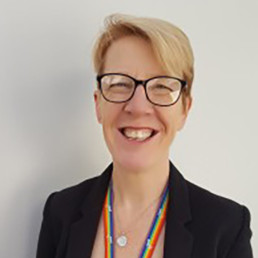
Written by Mel Lane
Mel Lane (she/her) is Head of Education at Pop’n’Olly. She has been a primary school teacher and teacher trainer for nearly 30 years and worked in schools on LGBT+ inclusion policies with thousands of children and school staff. Mel is a co- author of What Does LGBT+ Mean? (Pop’n’Olly, 2021).
When I first started trying to be LGBT+ inclusive in my lessons I was really concerned that it might prompt a lot of off-topic and probably negative comments from the children in my Year 6 class. We were learning about possessive apostrophes and I tentatively put the following on the board as a warm-up discussion:
Where should we put the apostrophe?
- The girls cloakroom
- The childrens playground
- Davids boyfriend
I stepped back and held my breath, waiting for the silly comments, the sniggers and the inevitable disruption and NOTHING HAPPENED! I literally couldn’t believe it.
At that stage, I was very new to inclusion work. We had nothing inclusive stuck up in the classroom, There’d been no inclusive assemblies and we’d just briefly touched on inclusion in one PSHE lesson. Surely, they’d never handle this, I thought. How wrong I was. The class quietly got on with the work and we discussed exactly where the apostrophes should go and why we’d put them there.
I think growing up and starting my career under Section 28 (the law that silenced discussion around LGBT+ issues in school) had given me such a strong sense that I ‘shouldn’t’ be talking about these issues in school. The children (aren’t children awesome!) showed me otherwise. They showed me that just dropping in references to LGBT+ lives and showing they’re just another way to be a human, was more than fine for them.
Now, I’m a huge fan of the drop-in for ALL TEACHERS, ALL SUBJECTS. There are so many easy examples we can include.
Here are a few suggestions:
- Sara went to the cinema with her two Mums and her brother. Adult tickets
cost £5.50, children’s tickets cost £2.50. How much did it cost for them all to watch the film?
- One of the people who really influenced Martin Luther King was Bayard Rustin. He was a black, gay man, inspired by Gandhi to believe in the power of non-violence. Do you think non-violence is a good way to get across your point of view?
- Professional footballer Jake Daniels said coming out as gay and having the support of his team-mates made him feel so good it helped him score four goals in his next match. Why do you think this support helped him so much?
- Marie vit à Paris avec ses deux papas.
When we include positive references to LGBT+ lives in all aspects of our teaching, we indicate to children that LGBT+ people are just as much part of the world as everyone else – that LGBT+ people live as diverse and varied lives as everyone else and that being LGBT+ is just another way to be a human.
Sometimes I’m asked why we should need to make these references – that we are drawing attention to something when we want everyone to be treated the same without reference to differences, but by talking positively about the rich diversity of LGBT+ lives we are helping to counter hundreds of years of silence. Silence sends an implicit message that ‘this is something we don’t mention’. Active references to LGBT+ lives send a message to all children that being LGBT+ is something positive, something completely normal and something that we can talk about with pride.
Empowering pupils to challenge gender stereotypes: A Premier League Primary Stars initiative

Written by PLPS
Premier League Primary Stars helps children to learn through the power of football in more than 19,000 primary schools across England and Wales. Free Premier League Primary Stars resources can be downloaded from www.plprimarystars.com
Gender stereotypes remain a persistent barrier to achieving equity in education and society. They influence how young people perceive themselves and others, shaping aspirations, limiting opportunities, and perpetuating inequality. This is why initiatives that actively address these biases are vital. One such initiative is the new resource from Premier League Primary Stars, designed to help teachers tackle gender stereotyping in schools while fostering diversity, equity, and inclusion.
The importance of challenging gender stereotypes
Gender stereotypes are deeply rooted assumptions about what boys and girls can or should do, often perpetuated by cultural norms, media, and historical biases. For instance, boys might be discouraged from pursuing artistic hobbies, while girls may face discouragement in sports or STEM subjects. Left unchecked, these stereotypes not only limit individual potential but also contribute to systemic inequality, reinforcing societal structures that marginalise certain groups.
By addressing these biases early, teachers can empower pupils to critically evaluate and challenge such assumptions. Doing so creates a foundation for more inclusive attitudes, enabling children to celebrate diversity and develop empathy.
A free resource that makes a difference
Premier League Primary Stars’ new gender stereotyping lesson is a comprehensive, teacher-friendly tool that equips teachers to lead impactful discussions and activities. Designed for Key Stage 2 pupils in England and Progression Steps 2 and 3 in Wales, the resource is both practical and inspiring.
Key features of the resource
- Empowering activities:
The lesson introduces pupils to the concept of gender stereotypes and helps them identify biases they may encounter in school or the wider world. Through engaging activities and thought-provoking discussions, pupils gain the confidence to challenge these stereotypes constructively. - Inspiring role models:
Representation matters. The lesson highlights stories of individuals – both male and female – who have defied traditional gender roles, encouraging pupils to think critically and celebrate diversity. From female athletes excelling in male-dominated sports to male caregivers embracing nurturing roles, these examples inspire young minds to imagine a world free of limitations. - Youth voice film:
The inclusion of a dynamic film amplifies the voices of young people, providing relatable insights and practical advice on fostering inclusion. This multimedia approach helps make the resource accessible and engaging, sparking meaningful conversations in the classroom. - Expertly crafted for teachers:
Developed in collaboration with subject matter experts and practising teachers, the resource is user-friendly and aligned with the curriculum. This ensures that teachers are well-supported in delivering sensitive and impactful lessons.
Real-world impact in schools
Feedback from teachers who have used the resource has been overwhelmingly positive. One PSHE primary teacher in Wales noted:
“This is a very user-friendly and engaging lesson that effectively targets the idea of stereotyping in school and out of school.”
The practical design of the lesson not only saves teachers time but also builds their confidence in addressing a complex topic. For pupils, the benefits are profound. They develop critical thinking skills, inclusive attitudes, and the ability to challenge harmful stereotypes – skills that will serve them well throughout their lives.
A call to action for teachers
Teachers have a unique opportunity to shape the next generation’s understanding of equity and inclusion. Tackling gender stereotypes in the classroom is a crucial step toward this goal. The Premier League Primary Stars resource provides a roadmap for doing just that, empowering both teachers and pupils to contribute to a more inclusive society.
Premier League encourages teachers across the UK to explore this free resource and integrate it into their PSHE or Health and Well-being lessons. By fostering open discussions and providing pupils with tools to challenge stereotypes, we can help dismantle barriers and create a world where all children can thrive – regardless of their gender.
For more information and to access the resource, visit Premier League Primary Stars.
Together, let’s champion diversity, equity, and inclusion in every classroom.
Our identities: A fixed entity?
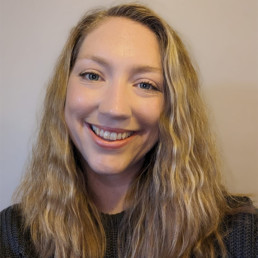
Written by Becky Shewell
My name is Becky Shewell and I am a Qualified Teacher of the Deaf, graduating with an MSc in Deaf Education with Distinction from The University of Manchester in 2023. I am the creator and founder of The Shewell IntersectionaliTREE, a database of books with positive and incidental role model representation, so children can see themselves to be themselves.
Often, when people think about their identity, the ‘big’ categories spring to mind. Their gender, sexuality, ethnicity, belief systems and so on. Of course, these form our identities, but during my time running workshops and talks as creator/founder of The Shewell IntersectionaliTREE, I’ve concluded that identities are much more nuanced than this. I usually start my workshops asking people to name five words they identify with and what surprised me is that often, people name traits related to their day-to-day lives. Words like dog-lover, vegan, mother, educator, singer and so on. I found this fascinating, as I didn’t expect this, thinking they would choose words that fall into much broader categories.
As for me, I identify as a queer, disabled woman but I do not necessarily identify by those things first. I am also a cyclist, sister, partner, creator and educator. The second set of traits are those which I embody on a day-to-day basis, that I really relate to. They are linked to the fact that I’m a queer, disabled woman because those overarching identities play into the life that I have shaped, and that has been shaped for me by external factors. I am a cyclist, because this is a low impact sport that I can participate in, as I have a form of hip dysplasia that stops me from being, say, a runner. I am a sister, which is a large part of my identity as a woman. A creator, because I have experienced challenges as a queer woman and an educator, because of the privileges of growing up in a loving environment and wanting to give that back. This is what speaks to me when I think about intersectionality and when I develop content to support our intersectional young people, through The Shewell IntersectionaliTREE, a library database of books with diverse, intersectional characters that our young people can relate to.
Our identity is not made up of single, fixed categories, but how these play out to create deeper, more meaningful traits that we really share when we want somebody to know about us and what makes us tick. It is a result of how all these intersecting identities shape us over time, as well as the social factors that have granted us privilege and power or discrimination and marginalisation.
Bronfenbrenner’s Ecological Systems Theory (1977) (Bronfenbrenner’s Ecological Systems Theory) even goes as far to draw into question how much our belief systems are really a choice, and not just shaped by our experiences, such as the family, place and opportunities we are born into. Indeed, our environment has a high impact on us; shaping our world view, choices and how we interact with each other. This was a focus on the PDGipEd/MSc Deaf Education course at The University of Manchester, where we considered differing parental views, to ensure the best care possible.
So, when we think about identity, are we thinking about it in a nuanced enough way? I think now, we are doing a good job of presenting a diverse range of characters on media platforms with d/Deaf and disabled characters on soap shows like Waterloo Road and Eastenders, queer shows like Heartstopper readily available on Netflix and a wide range of storybooks with intersectional representation in the mainstream bookstores. Yet, in a recent Masters project I carried out, participants found that the portrayal of these characteristics, or identities, is very much focussed on the identity trait and usually one identity trait, rather than a more nuanced and intersectional approach. For example, in d/Deaf storybooks, the focus is often on the fact that the character is d/Deaf and how the character could manage this. But being d/Deaf isn’t the entirety of somebody’s personality. They could also be interested in superheroes, or have two mums, or go to India for Diwali each year and this might be just important to them. Being d/Deaf is a part of their experience, which doesn’t necessarily need to form the whole of the plot line and perhaps, could be more powerfully represented as a part of their experience.
There is a rise of books with this type of incidental representation; for example, where the plot may be about a d/Deaf character having adventures as a superhero, and they just happen to take out their hearing aids for bedtime. Does this not give our diverse children and young people a chance to feel normalised, to see themselves reflected in positive, everyday role models for better self-esteem? I think, in our world, we are in danger of polarising and simplifying people too much. Why not recognise that we are nuanced and complex individuals, with a range of feelings, experiences and characteristics; both good and bad? I think this would encourage young people, and wider society, to develop more acceptance and understanding both within and outside of themselves; preventing narrower, polarized viewpoints that, I feel, seem to pervade the current mainstream media.
No child left on the sidelines: ParalympicsGB's Equal Play Campaign and the push for inclusive PE
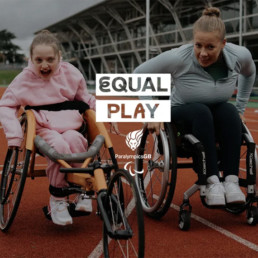
Written by ParalympicsGB
ParalympicsGB is the UK’s largest disability sports charity and relies on the support of its commercial partners to deliver a world class environment where athletes can achieve their personal best performances and break down barriers for all disabled people. Further details are available at https://paralympics.org.uk/
Physical education (PE) has always offered young people the chance to develop confidence, teamwork, and physical literacy. However, for millions of disabled children across the UK, inclusive and meaningful PE is still largely inaccessible. In response, ParalympicsGB has launched their Equal Play Campaign, a transformative initiative to ensure every child, regardless of ability, has equal opportunities in school sports. This movement comes at a crucial time, aligning with the Government’s review of the national curriculum. With so much at stake, the campaign’s message is clear: action is needed now.
A curriculum review with high stakes for disabled pupils
The ongoing curriculum review holds immense potential to address systemic issues that have long affected disabled pupils and those with Special Educational Needs and Disabilities (SEND). Currently, PE is not considered a core subject, which means it often takes a back seat to academic priorities. Even when PE is available, it frequently focuses on traditional sports, leaving out disabled pupils who require adaptive and inclusive activities.
ParalympicsGB has raised serious concerns that disabled young people are being overlooked in the review. In a society where 1.5 million disabled children are missing out on essential physical activities, this is unacceptable. Alarmingly, only one in four disabled children regularly participate in school sports, denying them the chance to boost their development, social skills, and mental well-being. This is a disparity we can no longer ignore.
The importance of breaking barriers
Disabled pupils face a complex array of barriers that differ significantly between mainstream and special schools. Addressing these challenges requires a comprehensive and inclusive approach. Crucially, we must understand that disabled pupils are not a monolithic group; their needs vary widely. From a lack of specialised equipment to insufficient teacher training, the obstacles are varied but solvable with the right strategies.
ParalympicsGB advocates for a more holistic understanding of physical literacy, one that celebrates diverse ways of being active. This vision moves beyond traditional sports to include adaptive and non-competitive activities, turning PE into a positive and empowering experience. The impact of inclusive PE is profound: it not only improves physical health but also fosters social inclusion, boosts self-confidence, and establishes lifelong habits of well-being.
Transforming the culture of PE
Creating inclusive PE requires a cultural shift in how physical education is perceived and delivered. Currently, the existing model often leaves disabled children feeling excluded or unable to participate meaningfully. ParalympicsGB emphasises the need to reimagine PE, prioritising equity and inclusivity to ensure every student can engage and benefit.
A key factor in this transformation is empowering teachers. Teachers are crucial to implementing change but often lack the resources or training to adapt lessons for disabled pupils. ParalympicsGB stresses the importance of revising teacher training programs to include robust, practical modules on inclusive physical education. By equipping teachers with the right skills—such as modifying activities to accommodate diverse needs—we can ensure that all pupils have equal opportunities.
Representation also plays a critical role. Increasing the number of disabled people in teaching positions can make PE more relatable and inspiring for disabled pupils. Teachers with lived experiences of disability offer unique insights and can act as powerful role models. Seeing someone who shares their experiences and challenges can fundamentally change how disabled children view their own potential.
Practical solutions from the Equal Play Campaign
The Equal Play Campaign puts forward targeted, achievable solutions aimed at building a more inclusive PE landscape:
- Empowering teachers: Providing continuous professional development and resources, such as workshops, guides, and access to best practices, to help teachers deliver inclusive lessons confidently.
- Adapting teacher training: Reforming initial teacher education to include strategies for inclusive PE, ensuring teachers are well-prepared to support all pupils effectively.
- Redefining PE’s role: Shifting the emphasis from competition to physical literacy. This approach makes PE about personal growth, joy, and inclusivity, rather than just winning or losing.
- Boosting representation: Encouraging disabled individuals to become teachers, thus bringing valuable perspectives to schools and inspiring pupils.
These changes are not just aspirational but necessary. By implementing these measures, the Government can take significant steps toward educational equity, ensuring no child is left out.
The time for change is bow
The curriculum review presents a rare chance to set new standards for inclusivity in schools. ParalympicsGB’s Equal Play Campaign underscores that PE should be a welcoming space for all children to experience the joy of movement. This effort is about more than just sport; it represents a commitment to a society that values every member equally.
For those wanting to learn more, visit ParalympicsGB’s website. Teachers, parents, policymakers, and community members all have a role to play in creating an education system that genuinely leaves no child behind.
By advocating for inclusive PE, we are laying the groundwork for a future where diversity, equity, and inclusion are not merely aspirational values but everyday realities. Let’s ensure every child, regardless of ability, gets the chance to play, grow, and thrive.
Addressing the impact of global conflicts
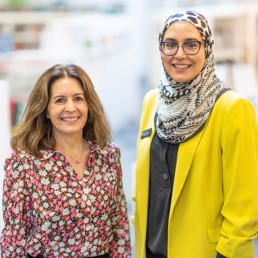
Written by Claire Shooter and Monia Zahid
Claire is Deputy Head Pastoral and DSL with a keen interest in EDI. She changed career and went into teaching 16 years ago after her children were born and has never regretted it. Over this time, she has enjoyed a range of roles including Head of Spanish and Head of Year.
Monia is Head of Equity, Diversity and Inclusion and teacher of Economics at Haberdashers’ Boys’ School. She oversees EDI provision at the school and is passionate in driving change for the whole school community.
If you are to take just one message from this blog, then let it be that schools must always be safe spaces for students, especially in times of global unrest. Over the past year, our school has learned invaluable lessons about how global conflicts can ripple into a school community, affecting students in profound ways.
Our school, located just outside North West London, has a vibrant and diverse community, with active faith and cultural societies, a multi-faith prayer room, and celebrations of key festivals from many religious traditions, including Eid and Chanukah. We would say that our diversity is our ‘superpower’ and our students have ample opportunities to learn about each other’s faiths.
So the immediate weeks following October 7th 2023 threw an unprecedented and emotional challenge.
At our initial assembly following the horrific events of that day, we took a moment to reflect on the events unfolding in Israel and Gaza, honoured the casualties, and reminded students not to engage in divisive political discourse that could lead to conflict or tension within the school.
However, many of our Jewish students felt frustrated and unsupported, feeling that we were minimising their pain by not acknowledging the attack for what it was—a terrorist act. They felt that if such violence had occurred in any other part of the world, it would have been called out more forcefully. Many of our Muslim students expressed their fears about being targeted due to their Muslim identity. They voiced frustration that the suffering of innocent Palestinians was not being acknowledged, while stereotypes and misinformation about Muslims went unchallenged.
Both Muslim and Jewish students were living in fear, be it Zain who worried about his hijab-wearing sister, or Max who worried about wearing his Star of David chain. Both felt nervous to show their identities in public.
This marked the start of a week of difficult conversations as our student body articulately and respectfully voiced their concerns. We quickly found ways to offer support. One of the first initiatives was the student-led prayer service, a daily gathering attended by many students who wanted to reflect, pray, or simply share a sense of community.
At the end of that week our Headmaster addressed the entire school in a special assembly. He acknowledged the emotional toll on our community, quoted students who had bravely shared their perspectives, and provided historical context for the conflict. He reframed our message of unity and respect, encouraging everyone to treat each other with kindness and grace. The assembly ended with a moving moment of reflection led by our Faith Assembly Committees.
Social media was another challenge to address. Algorithms often amplify one-sided views, and young people increasingly rely on platforms like Instagram and TikTok for their news, rather than traditional sources. These platforms often mix fact with fiction, viral conspiracy theories, and disturbing images. We provided clear guidelines on how to navigate social media responsibly, reminding students to think critically before liking or sharing content and to be mindful of the digital footprint they leave behind. When inappropriate posts appeared, we used a combination of education and sanction to address issues.
We also realised that staff members needed support, unsure of how to engage in conversations for fear of being seen as political. Many felt isolated, and simply taking the time to approach another colleague and acknowledge the difficulty of the situation went a long way toward breaking down those feelings. By fostering an environment where everyone, regardless of their political views, could talk openly and with empathy, we began to rebuild a sense of community. It’s not about politics, it’s about humanity.
While we acknowledge that there is still much work and education to be done, we are committed to trying to guide our students through the complexities of the world around them. Our students have voiced appreciation for the fact that tensions are left outside the school gates, and it’s a safe place for all. Whilst we don’t have all the answers, we’re committed to ensuring that:
– Anti-racism efforts also incorporate discussions on both antisemitism and Islamophobia, so that all students, regardless of their background, can become allies in challenging hate.
– We ask the difficult questions and acknowledge the emotional weight of these issues—not to take a political stance, but to show empathy and understanding.
– We create opportunities for students to learn from diverse views, helping them understand that dialogue is not about winning arguments but about hearing other perspectives and learning to ‘disagree agreeably’.
– We recognise that this work is ongoing, and schools need to create spaces for continued dialogue, assemblies, and reflection.
– Above all, we strive to create a safe and supportive space for *all* students, where diversity is celebrated, and the narratives students encounter promote unity, respect, and mutual understanding.
What does it mean to our families when we support bilingual literacy?
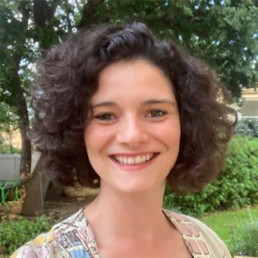
Written by Emma Sheppard
Emma founded The MTPT Project, the UK's charity for parent teachers, in 2016 when on maternity leave with her first child. She has 12 years experience as an English teacher, Lead Practitioner and ITT Lead, and now runs The MTPT Project full time.
This is a vulnerable blog to share publicly. If you follow me on LinkedIn, it will reveal the hard work and heartache behind the upbeat and practical strategies around bilingual education that I often share.
Of course, we save our shiniest achievements for social media platforms but over the last few weeks – in the real world – I have felt keenly, the crushing failures of being “immigrant mum”.
For context, I am an educated middle-class British former teacher living in France with my bilingual children and French husband. My children were born in the UK, have been fully bilingual since birth, and now attend French state primary school. I’m a fluent French speaker (and have a state-issued certificate to prove it) work in English and socialise in both languages.
Sounds dreamy, right?
But sometimes, I feel as if I am losing my children – that they are so culturally embedded in the country we live in, that they have no connection to the identity of their birth country. My identity.
This fortnight, we have been learning about Advent in our home-learning English lessons. They don’t go to school on Wednesdays, you see, because it’s France.
My son, who had a year of lockdown education, is au fait with the characters. He was, after all, the donkey in his Reception nativity and plodded along to Bethlehem with Mary and Joseph. He best friend Gabriel was… the angel Gabriel.
My daughter, who has been educated in the secular French system since pre-school, has a vague understanding of the baby, called Jesus. The star? Joseph? Virgin birth? Heavenly hosts? Gold, frankincense and myrhh? Even the word ‘shepherd’ in English? All these cultural indicators so essential to the British primary education experience? Not a clue.
It gets worse: for the last three years, we’ve attended the carol service run by the local American church. I alone in my family know the words to Silent Night. My husband and children are ignorant to the joy of “Glororororororia” or “Fivvvvee go’old ringggsss!” and as such, they can’t sit through a full service. I hissingly insisted my husband remove them (and himself) somewhere between Royal David’s City and Angels in the Realm of Glory and – French and relieved – they went to eat waffles and ride fairground rollercoasters in le marché de noël.
Extended writing – the lovely recipes and stories and letters you’d expect in lower KS3 – simply aren’t required of my children yet in the French state system. Admittedly, their grammatical knowledge is fast surpassing my own, but mostly they are asked to copy, or write short responses to comprehension activities.
They have never been asked to be a Victorian maid or a to persuade anyone to save the rainforest. They have not written a diary entry from a ship in the middle of the Atlantic, or a newspaper article about a volcanic eruption. Maybe creativity, generally, will never be required of them?
The request to write the Nativity story therefore resulted in meltdowns on all fronts: my son can’t bear the idea of more than two sentences and disappears into the ether of his daydreams; my daughter can’t remember how to spell ‘all’, even though it’s been on her spelling list for millennia.
My children are spectacular: there is no need to qualify this with any reasons why. They just are.
But they are not British, and they have no other encouragement to be British than me, their mother. Ensuring they retain a sense of this identity has become a base urge in me. They will know who Shakespeare is. They will eat jacket potatoes. They will understand the culture importance of a Harvest Festival. Failure simply isn’t an option.
But a lot of the time I feel like a lone salmon, swimming against the current. And increasingly, I’m experiencing the anticipatory grief of becoming the mother of two French children.
For the first-generation immigrant parents in our school communities, how keenly is this loss also felt?
Do they, too, look at their children and see huge holes where a shared identity should be?
And as schools, what can we do to support families who might be going through similar experiences?
(Here come those upbeat, practical strategies…)
- Understand, appreciate and acknowledge (if you can) the cultures of your school communities – including the educational cultures
- Value and encourage the use of the home language – never fall into the trap of thinking that one language leads to an inability to acquire another because the opposite is true – languages feed off one another and grow together
- Value languages, and teach them well – from the earliest possible age
- Create bilingual streams if appropriate for your school context
- Introduce Community Language GCSEs and A Levels as far as your timetabling or extra-curricular offer can support – and involve parents in their children’s preparation for these exams
- Research community language hubs and signpost these to parents if you don’t have the capacity to ‘in house’
- Align language with culture – food, traditions, literature, film, history, sports – and take opportunities to celebrate these
- Foster opportunities where parents can make connections and build their own language communities
As cultural diversity in our schools increases, assumptions of monolingualism in our curricula and communities will only become a hindrance. Celebration and practical support for families aspiring to full bi- or multilingualism will bring out the best in our students and support the full complexity of their identities.
My Becoming
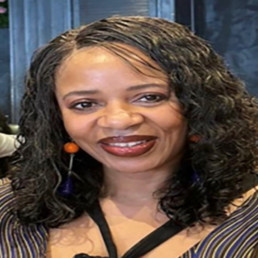
Written by Caroline Anukem
Caroline Anukem is Equity, Diversity and Inclusion Lead at Beaconsfield High School in the UK. She is a driving force, a change-maker, and a relentless advocate for equity.
Once upon a time, in the 1980s village of Woolton, Liverpool, my educational journey began at Notre Dame, a Roman Catholic Grammar School with a simplicity and homogeneity that defined the era. Diversity, an unfamiliar term, seldom found its way into our vocabulary. Inclusivity, if acknowledged at all, meant conforming to a narrow mould. The notion of an EDI Lead was beyond imagination, and conversations about inclusion were but a whisper in the wind. I will definitely one day take a trip down memory lane and share my experiences.
Fast forward to the present day, where the quaint village experience meets the vibrant landscape of Beaconsfield High School. Here, I am privileged to be the school’s EDI Lead. Over the years we have witnessed an extraordinary transformation. Our school, once bound by conformity, now embraces the range of backgrounds, cultures, and identities. Diversity is not just acknowledged; it is a cause for celebration. This celebration of diversity and citizenship was ignited during our inaugural Global Citizens Week celebration. Inclusion is not just a buzzword; it is consciously embedded into the very aspect of our educational system.
The positives of this transformation are as abundant as the perspectives, worldviews, and lifestyles our students now encounter. They merge a rich foreword thing, diverse and inclusive learning experiences, the invaluable lessons of empathy, respect, and the strength derived from unity in the face of diversity. We are not merely preparing them for a world where these qualities are admirable; we are preparing them for a world where these qualities are essential. Yet, as we bask in the glow of progress, the journey towards true equity and inclusion continues. Barriers, some dismantled, others still standing, remind us that our work is far from over. As the EDI Lead, I recognise the need for more diversity among our educators and leaders. Our curriculum must reflect a global perspective, ensuring every student feels seen and heard.
The concept of an EDI Lead, once unimaginable, now stands as a beacon. It should not be a rarity but a standard that is imperative at the core of our education system. I believe that EDI and Safeguarding share common ground promoting a safe and secure environment. Our aim is a society where uniqueness is embraced, where every student sees themselves reflected in their education, and where equity is not just a distant goal but a living reality.
In conclusion, the journey from the simplicity of my village education in Liverpool to the vibrant inclusivity of BHS is a testament to our progress. Yet, it serves as a reminder of how much further we can go. As an EDI Lead, my commitment is to develop a learning environment thriving on differences, not just educating minds but nurturing hearts, building lasting friendships, relationships and encompassing the British Values in our daily practices. The journey toward a more inclusive and equitable educational landscape continues, one story at a time.

